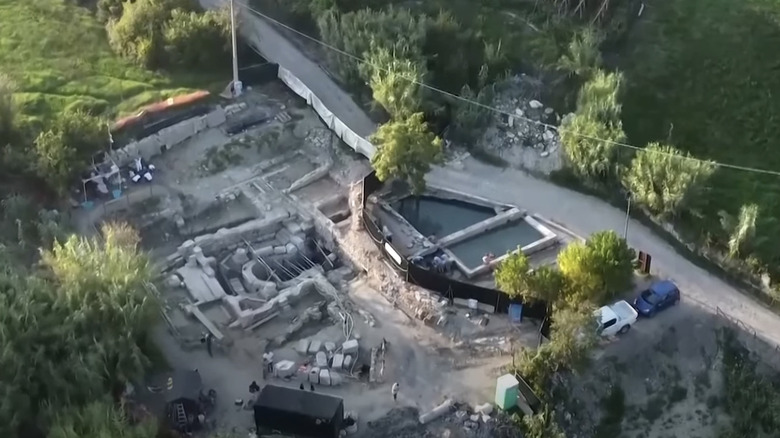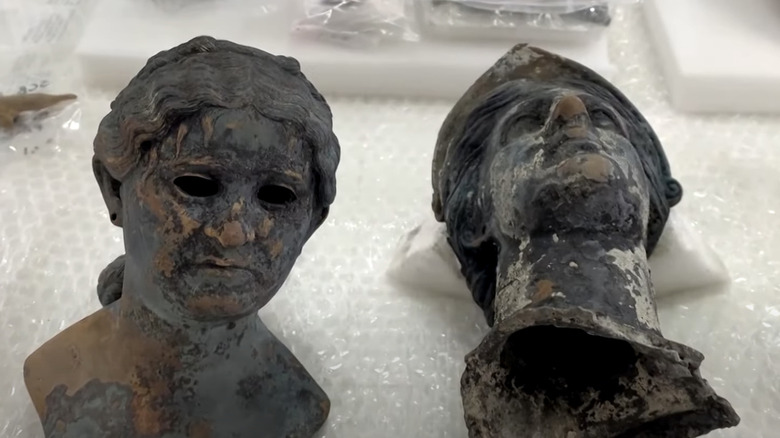The Cache Of Perfectly Preserved Artifacts Discovered In Italy's Tuscan Hills Is Thousands Of Years Old
One of the most significant archaeological finds in years was uncovered in late 2022 in the Italian region of Tuscany, according to CNN. The discovery yielded a number of significant artifacts from Ancient Rome that experts believe could date to around the 2nd century B.C. It's the sheer size and scope of what was excavated, the well-preserved nature of the artifacts, and what some of the objects are made from that makes the Tuscan excavation so remarkable.
According to the German news outlet Deutsche Welle (DW), Jacopo Tabolli, the archaeologist in charge of the excavation project that happened over the course of roughly three years, said, "[T]he discovery will rewrite history." The archaeological work took place in the hills of Tuscany, and the discoveries date from the time of the Etruscans, Tuscany's first inhabitants. It was also an era when ancient Rome was in its ascendency. For these reasons, Tabolli said the 2022 Tuscan find is without parallel.
The artifacts were extracted from ancient thermal baths
As CNN goes on to note, the Tuscan archaeological dig took place in ancient thermal baths, and it was the combination of mud and water with high quantities of certain minerals that kept the discoveries so well preserved. Some of the Ancient Roman and Etruscan artifacts discovered were made of brass, which is significant because up to the point of the 2022 Tuscan excavation, only artifacts made from terracotta — a type of earthenware — had been identified from around the same period.
Some objects found near the town San Casciano dei Bagni in Tuscany were in such good condition, as DW writes, that ancient Latin and Etruscan names and words could still be read in some inscriptions. At that time, both Romans and Estrucans traveled to the thermal baths with offerings to the ancient gods, which were dropped in the water. By doing so, people at the time hoped to enjoy medicinal benefits for a number of different ailments affecting them. In that sense, ancient people used the baths as something like a wishing well.
The dig yielded around 6,000 Ancient Roman coins
Among other objects found at the Tuscan archaeological dig site were a large number of Ancient Roman coins and several brass statues from the period, based on CNN reporting. Notably, some brass statues were of specific body parts — including arms and legs — as well as internal organs; pilgrims who traveled to the thermal baths to make an offering are thought to have experienced health problems. There were also a number of Ancient Roman gods and goddesses represented by the statues, as well as a number of Roman emperors, as DW reports.
Some of the currency found was made from bronze, but other coins were made from gold and silver. Some objects found were not offerings but rather decorations for the temple, as Reuters notes. Of the Tuscan archaeological find, Massimo Osanna, who is Italy's Director General of Museums, said (via DW), "This is certainly one of the most significant bronze finds ever made in the history of the ancient Mediterranean." And head archaeologist on the dig, Jacopo Tabolli, said (via DW) that the Tuscan discovery is the largest of its kind, including bronze statues ever found from the Etruscan period.


